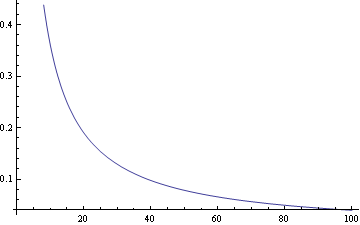Could someone explain why Mathematica can't finish computing this limit (this is a limit of an array, when n -> Infinity (n is an integer), whose elements are area-integrals as shown):
Limit[Integrate[(x^(2n) + y^(2n)) Boole[x^(2n) + y^(2n) < 1], {x, -1, 1}, {y, -1, 1}], n -> Infinity]
In the case when n=2, the integral is Pi/2, for n=4 it is (2 Gamma[1/4] Gamma[5/4])/(3 Sqrt[\[Pi]])
Thanx


n=2.1gives a revealing error. Do you mean fornto be integer? $\endgroup$